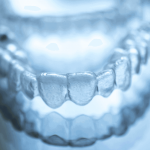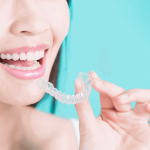Traditional Braces: When Removed Do They Hurt and What You Can Expect?

The majority of patients do not experience pain when their braces are removed. However, most dental procedures remain unpleasant, and you should expect some soreness when the brackets are removed. This is because your teeth are no longer under pressure. The teeth would be tender since nothing is keeping them together. The best way to control any pain is to make use of ibuprofen as a pain reliever.
Is it Wise to Remove Your Own Braces?
Only a qualified orthodontist near you should remove braces. They have the equipment to safely remove the brackets and wires from your teeth. If you try removing the braces at home, you risk injuring yourself since many pieces are fairly sharp.
Several incidences of persons eating bits of their braces have been reported. Brackets and orthodontic wires can break and fall off and get ingested or inhaled. The overall consensus is that you would be safer in the capable hands of an orthodontist.
How Can You Prepare for Braces Removal?
There isn’t a single optimum way to prepare for the removal of traditional braces near you. If you fear getting dental work done, you may want to take over-the-counter pain medication before your visit. Before your appointment, brush your teeth and clean your braces. Both you and your orthodontist will find the removal process easier due to this.
Braces Removal Procedure
Your orthodontist in Irvine will release each bracket on your teeth with a specific metal tool before removing your braces. This will normally pop your braces off in one piece, including the brackets and wires. Your orthodontist will also remove your molar band, which is a metal band that connects your braces to your teeth.
Your teeth will require a thorough cleaning after your traditional braces in Irvine have been removed. This is because braces often seem to trap plaque and food between your teeth. Your orthodontist will also use a strong grinder to polish your teeth, eliminating any adhesive used to secure your brackets to your teeth.
Your orthodontist may do X-rays, as well as a bite impression or digital photos, after the cleaning. This is to ensure that the braces have performed as expected. These measurements could also be utilized to build a retainer for you. The retainer happens to be a device that keeps your teeth from shifting. When and how often you should wear your retainer will be determined by your orthodontist.
Finally, your orthodontist may examine your wisdom teeth (if you have them). If your wisdom teeth start to emerge after braces have been removed, your orthodontist may propose that you have them extracted. This way your teeth will not easily shift in the future.
The time it takes to remove braces, clean teeth, and prepare a retainer is usually around an hour. Depending on your circumstances, it may be quicker.
Oral After Care and Braces Removal Tips
Following the removal of your braces, cleaning and caring for your teeth should be much simpler. Brush your teeth twice daily, especially following meals. You can also start flossing every day. Mouthwash, as well as whitening treatments, can assist in decreasing any discoloration caused by your braces. The discoloration may disappear on its own in certain situations due to spontaneous remineralization.
If you have aching teeth after removing your braces, you should avoid sticky or hard foods. The majority of people who wear braces look forward to when they will be taken off. The procedure is simple to follow. It is rarely painful, even if it is irritating. Once your braces are removed, make sure to follow iSmiles Orthodontics instructions for aftercare, retainer use, and follow-up visits.
Relevant Links:
https://www.ismilesorthodontics.com/2021/06/18/traditional-braces-vs-invisalign/
https://www.ismilesorthodontics.com/2021/05/19/the-advantages-and-disadvantages-of-ceramic-braces/














